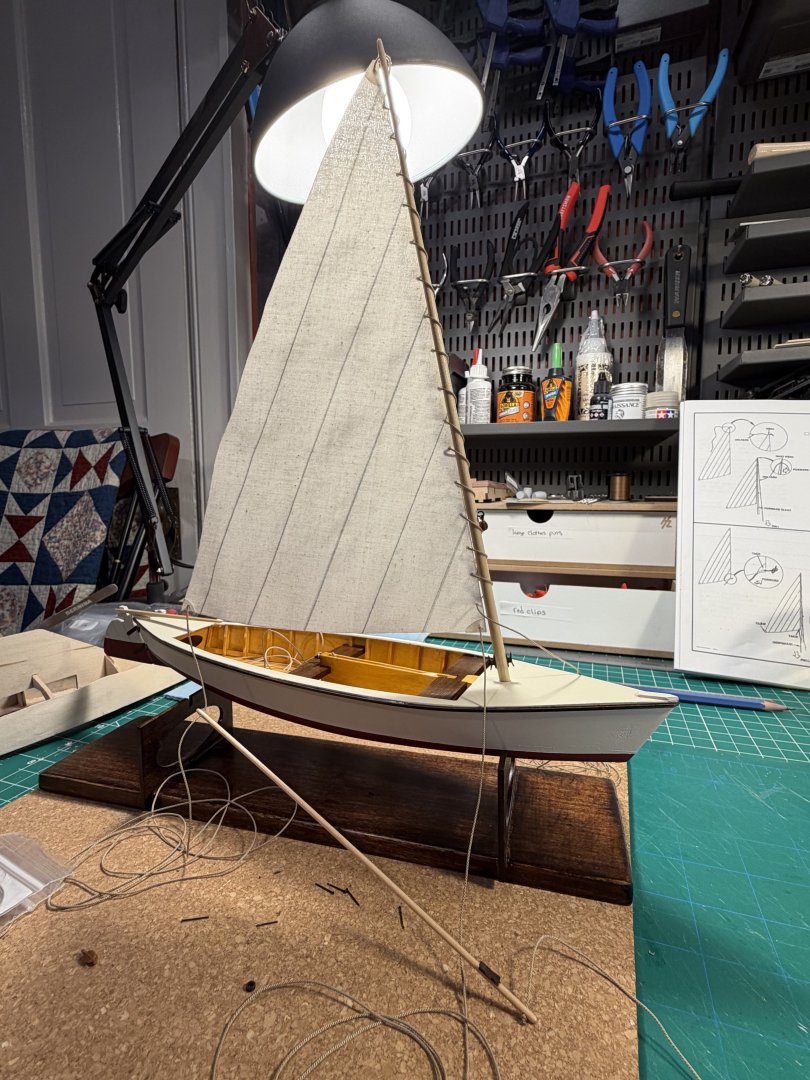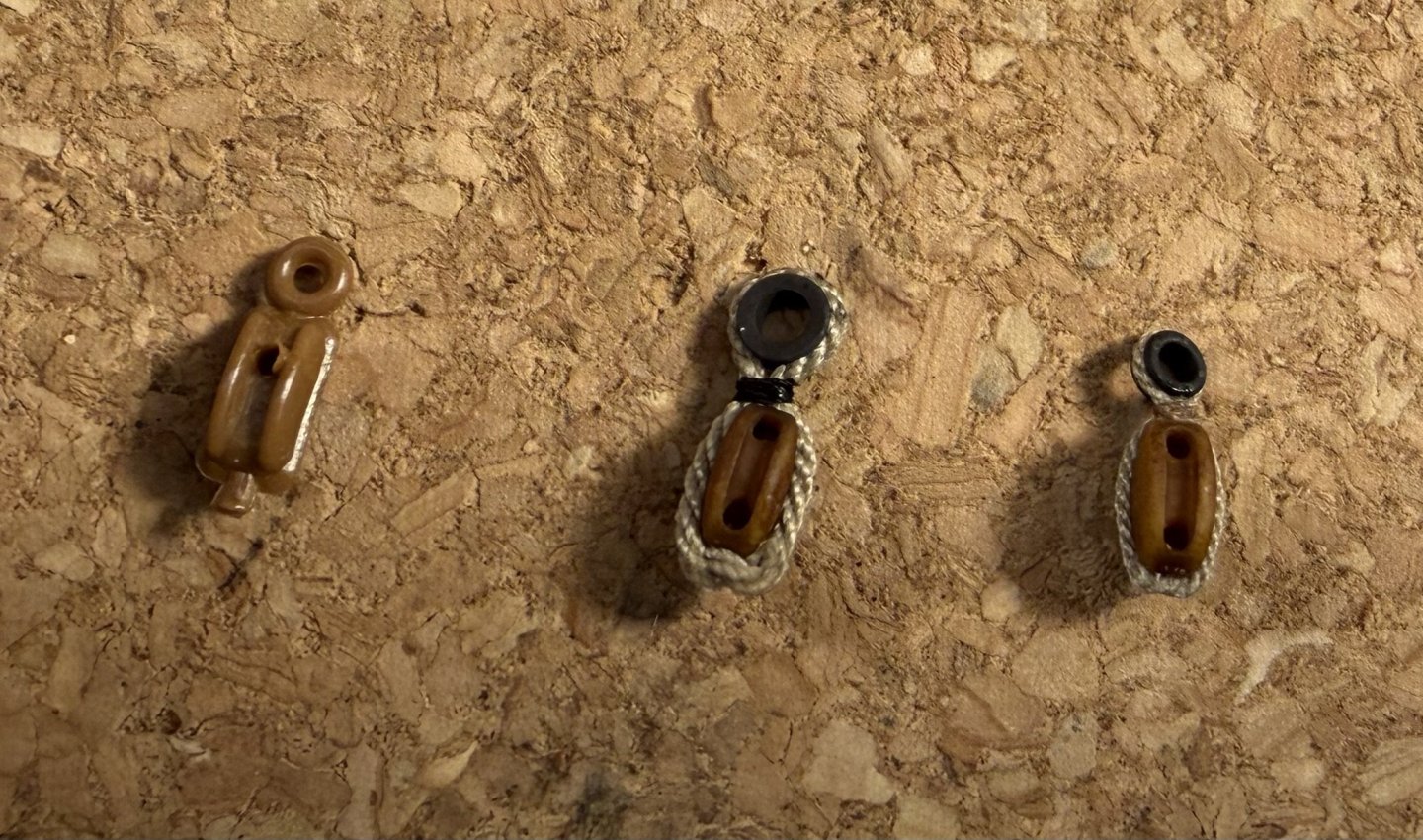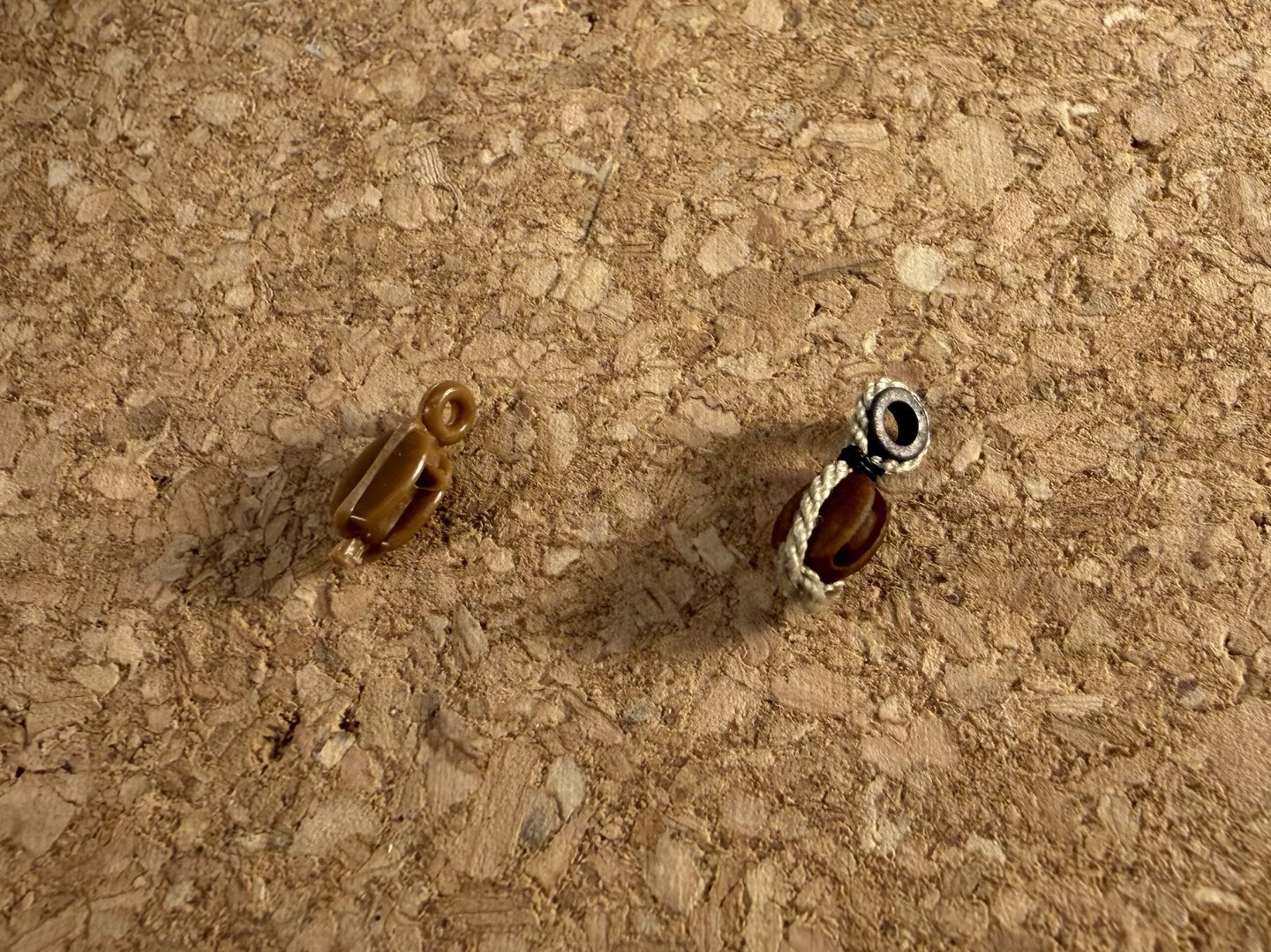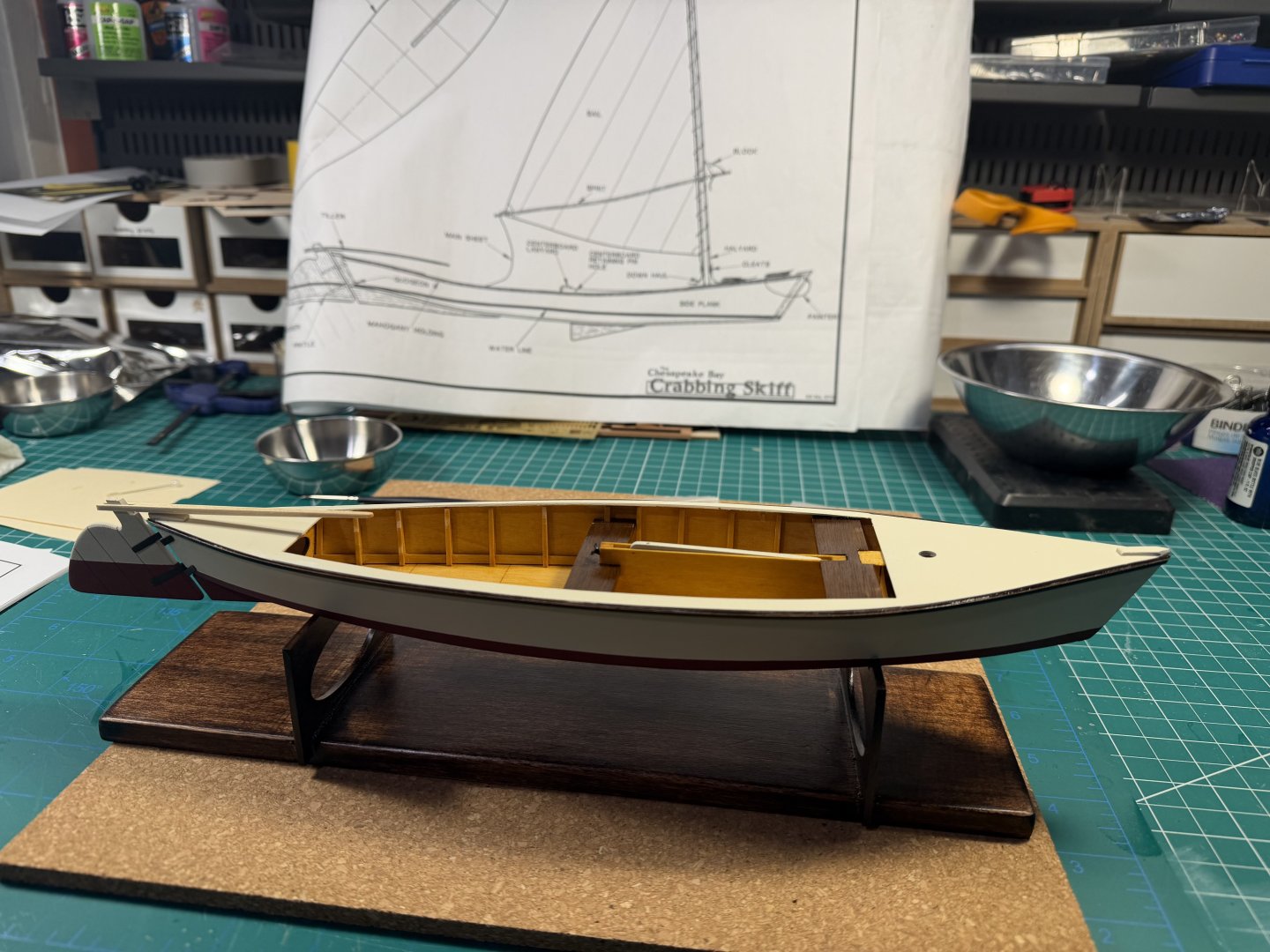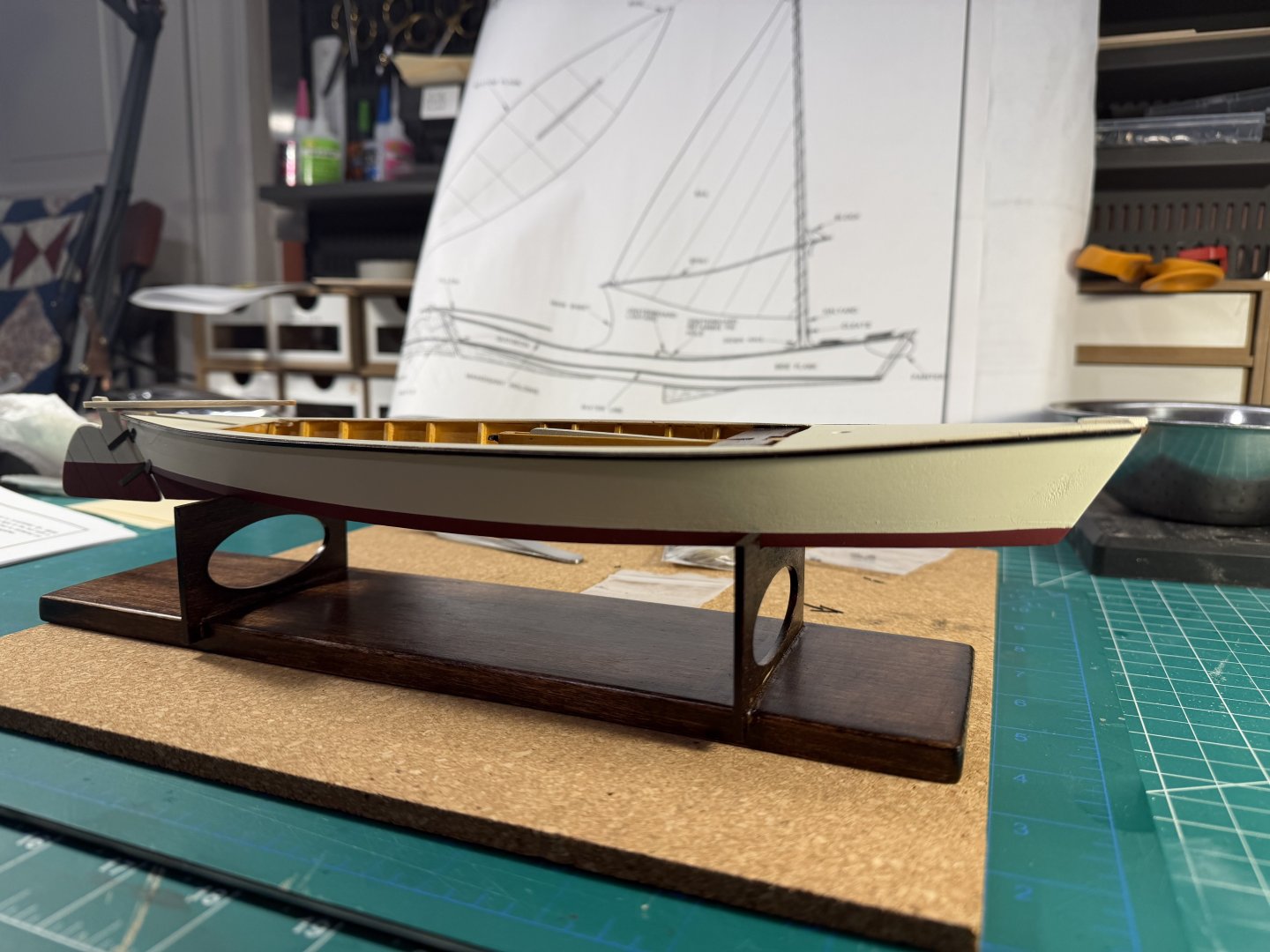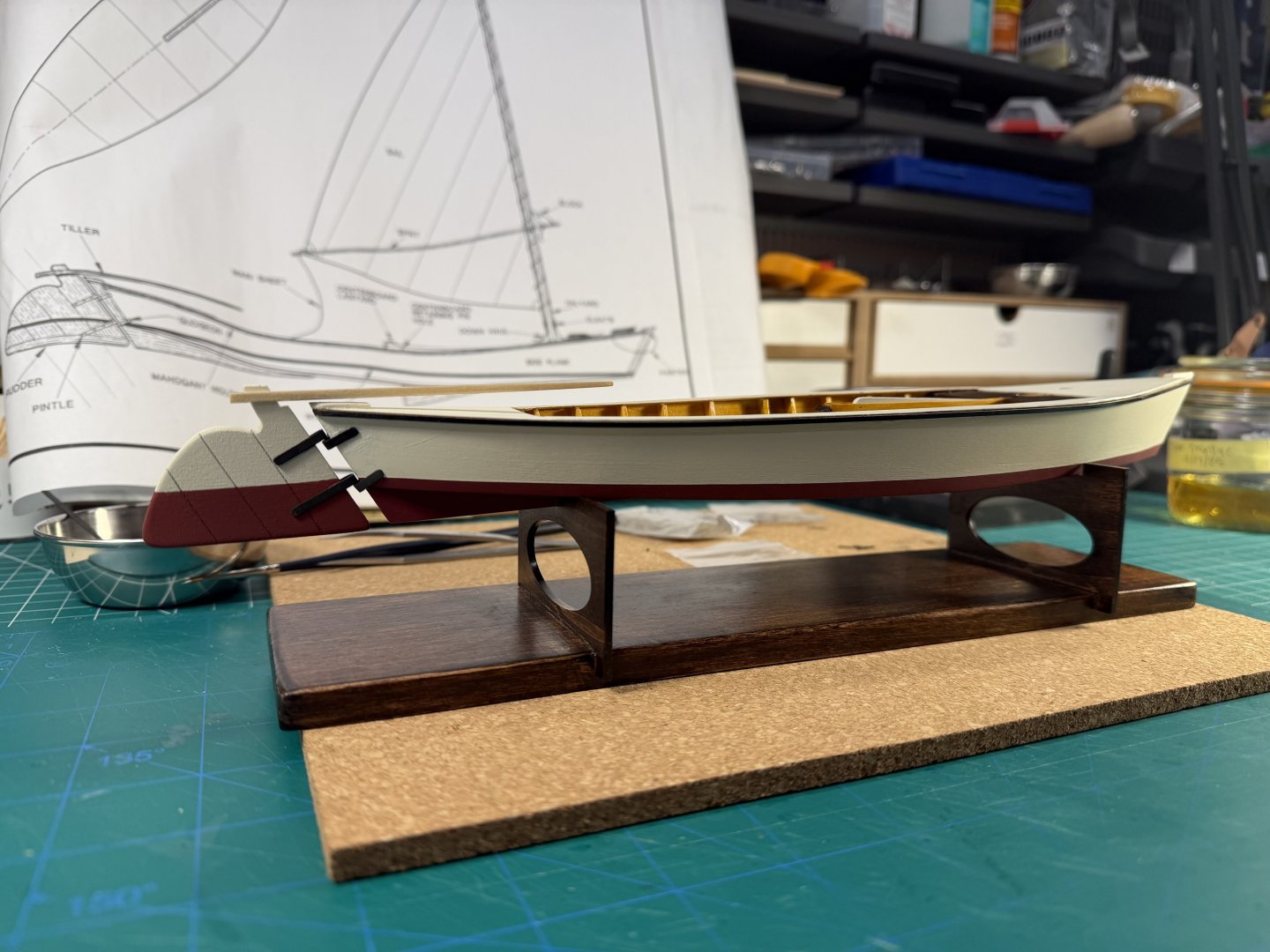
palmerit
NRG Member-
Posts
1,035 -
Joined
-
Last visited
Content Type
Profiles
Forums
Gallery
Events
Everything posted by palmerit
-
Recommended First Machine
palmerit replied to vvvjames's topic in Modeling tools and Workshop Equipment
Have you considered the Ultimation tools - sander and slicer : https://ultimation.ca They’re high quality but non-motorized. They both small and light enough that you can easily take them on and off a workbench. Lots of uses of a power sander are easily done with the Ultimation sander and the slicer is great for cutting planks. I use both of them all the time. The total for both tools I think is around your budget and worth it I think. This set solves the problems you highlighted about keeping your part cut and sanded at 90 degrees. I’d recommend these first and then move on to power tools that will need a dedicated area. With the Ultimation tools I can do everything from my work table in the house, keeping the slicer and sander right under the table. For me, a power sander (or mill or lathe or table saw) would have to be down in the cellar. -
There are some peculiarities with the kit. These are re-issues of Midwest kits that are decades old. The instructions are detailed but describe techniques that haven’t been used for years and there are mismatches between the instructions and the parts as re-issued. I ended up modifying the kit a bit, adding some interior trim pieces to correct for where the pieces left gaps, and added a skirt around the open section because there were inexplicable gaps in the thwarts.
- 33 replies
-
- crabbing skiff
- Chesapeake Bay crabbing skiff
-
(and 1 more)
Tagged with:
-
Some simple rigging on this one. I might finish this kit tomorrow before leaving to go out of town to visit family next week.
- 33 replies
-
- crabbing skiff
- Chesapeake Bay crabbing skiff
-
(and 1 more)
Tagged with:
-
@Nickk I assume you’ve built a lot of models - can’t imagine taking on a ship the size and complexity of the Victory unless I had way more experience than I do now. And I can’t imagine building any kit of that complexity with poor instructions unless I could essentially scratch build a model without needing instructions. I agree with @Ronald-V that if I were going to take on the 1000s of hours to build a Victory that I’d want one with great materials and great instructions - and build logs and videos to turn to for help.
-
Take 2: left: original plastic piece from the kit middle: first attempt with thicker rope and a larger thimble (and a black seizing) right: second attempt with thinner rope and a smaller thimble (and a tan seizing)
- 33 replies
-
- crabbing skiff
- Chesapeake Bay crabbing skiff
-
(and 1 more)
Tagged with:
-
Thanks. Yeah, after doing it I was thinking the same thing.
- 33 replies
-
- crabbing skiff
- Chesapeake Bay crabbing skiff
-
(and 1 more)
Tagged with:
-
@DB789 how does the Grecian compare to the Adder? I’m thinking of doing both. I know the Grecian has copper plates, which is certainly something new for me and likely contributes to the cost difference. Is there any real difference otherwise in the complexity of the hull or the rigging between the Grecian and Adder (I know they're different, but would you recommend doing one before the other)?
- 105 replies
-
- Grecian
- baltimore clipper
-
(and 4 more)
Tagged with:
-
- 33 replies
-
- crabbing skiff
- Chesapeake Bay crabbing skiff
-
(and 1 more)
Tagged with:
-
- 33 replies
-
- crabbing skiff
- Chesapeake Bay crabbing skiff
-
(and 1 more)
Tagged with:
-
I'm not an expert - one thing I'd recommend: That looks like green Frog tape (or similar). For masking at the edge of painting a line like that, Tamiya tape (which is yellow in its thicker versions, white in its thinner) is significantly better (I've seen people test alternatives on YouTube and the difference is pretty striking) - it comes in a bunch of sizes (from really tiny to wide). It's kind of expensive (certainly compared to Frog tape) but you do not use much, especially if you just use it to mask lines being painted. Also, after you put the tape down, "burnish" the line by running the back of your fingernail or the back end of a paint brush along the line. Another trick for painting a line: Imagine you are painting the top white and the bottom red and you already painted the top. After masking the line with (Tamiya) tape, paint white along the line and let it dry, so some white paint is where you'll be painting red and on the tape. Then paint the red. That one layer of white paint can really help keeping a fine line (along with using Tamiya tape and burnishing), limiting the bleed through under the tape. I learned all those tricks here and the most recent line I marked off and painted was nearly perfect compared to the first couple of times I tried just using tape alone. Depending on how OCD you are, you may still have some bleed through you'd need to touch up with a tiny paint brush, but doing these things can help keep the bulk of the line crisp.
- 9 replies
-
- benjamin w latham
- Model Shipways
-
(and 1 more)
Tagged with:
-
I like this Curtis_Wooden_Shipyard video on tying ratlines. I also liked his tweezers for doing this and bought a couple. Bernina 90 degree tweezers: https://www.universityofsewing.com/shop/c/p/BERNINA-Tweezers-8-Series-x53811611.htm
-
I’ve never been able to get the finish with paint brushes that I can with an airbrush. On a 1:64 scale ship, any visible brush stroke is going to be out-of-scale. I’ve seen people do a great job with a brush. But even with high quality paint and brushes, when painting a model or painting trim in my house, I’ve always gotten brush strokes.
-
Some people are really good at applying paint with a bush without visible brushstrokes - don’t know if that’s from using very thinned paint with multiple layers or well-honed technique. I do use a brush for touch up (often a very small 000 point brush) but an airbrush works nicely. It’s not cheap to kit out certainly compared to a few brushes.
-
Thinning would be a good option (and practice). Make sure you thin with the right product. Some paints can be thinned with water. Others really need to use the thinner recommended by the manufacturer. I suppose doing something with the engraving depends on the model manufacturer. I've never seen a need for that with a Vanguard model. The engravings on the wood are crisp.
-
I pulled a screen shot from my first (Sherbourne) and second (Ranger) planking. I realized I didn't have a shot of my Ranger before I used some wood filler.
- 43 replies
-
- Lady Isabella
- zulu
-
(and 1 more)
Tagged with:
-
I'm thinking next Vanguard model I build I would like to buy some extra pear wood strips for the planking. There were times I cut a strip too short or shaped them too thin or too fat or was unhappy with a few after adding them and would have liked to strip them off. The model kits come with extras, but not enough to set a high bar for what makes it on the model. Someone shared with me a photo recently of someone's build - I think of one of the Syren kits - with more trashed planking strips than ones that actually made it on the model. @chris watton Can we order more pear strip wood for planking from you? Or can you point to where you get yours from? Or is pear wood pear wood wherever you get it, so long as it is the right dimensions? I suppose I could just order from https://www.modelerssawmill.com and compare with the wood with the next Vanguard kit (and either combine them together or use the unused pear from that Vanguard kit for the next Vanguard kit if it uses the same second planking dimensions).
- 43 replies
-
- Lady Isabella
- zulu
-
(and 1 more)
Tagged with:
-
Finished the second planking and did some standing. I still need to sand a bit more in a few spots. But being my third real strip planking (the first being my Vanguard Sherbourne, second being my Vanguard Ranger) I can see my slow improvement.
- 43 replies
-
- Lady Isabella
- zulu
-
(and 1 more)
Tagged with:
-
Drill bit suggestions
palmerit replied to SiriusVoyager's topic in Modeling tools and Workshop Equipment
Definitely look for HSS bits for a pin vise or dremel. Lots of the ones on Amazon aren’t and they snap easily (echoing what @wefalck said). Nothing more fun than having a piece of drill bit break off inside for model. -
Fund raising
palmerit replied to Russ2025's topic in Using the MSW forum - **NO MODELING CONTENT IN THIS SUB-FORUM**
Call the fraud dept for that card - they might have just blocked it. I bought two things at the Apple Store recently with my Apple CC and Apple detected the second Apple purchase erroneously as fraud. -
Elmers wood filler is less gritty than Minwax filler (the only two I’ve tried). Some swear by Bondo (for filling car metal) at least if sanding and painting. For small filling, especially if intending to leave wood (not painting), the best is a slurry of wood left from sanding (the same wood you’re filling) white glue, and water.
-
@Knocklouder did you happen to check if the Smithsonian has plans you can get for the Harriet Lane? I know from Olha’s Gunship Philadelphia build that Smithsonian plans can really help to go beyond what’s in a kit. I haven’t yet splurged on buying the indexes of plans from the Smithsonian.
- 53 replies
-
- Steam Cutter
- Harriet Lane
-
(and 1 more)
Tagged with:
-
I bought some Bob Smith before, but I don't think I got a medium one. Is this the right one? https://www.scalehobbyist.com/catagories/Paint_and_Construction/insta-cure-gap-filling-1oz/BSI00000107/product.php?kw=bob,smith I'm gathering from what I read above that the Super-BSI Gold+ medium gap filling is similar but odorless: https://www.scalehobbyist.com/catagories/Paint_and_Construction/super-gold-1oz-medium-gap-filling/BSI00000127/product.php?kw=bob,smith
About us
Modelshipworld - Advancing Ship Modeling through Research
SSL Secured
Your security is important for us so this Website is SSL-Secured
NRG Mailing Address
Nautical Research Guild
237 South Lincoln Street
Westmont IL, 60559-1917
Model Ship World ® and the MSW logo are Registered Trademarks, and belong to the Nautical Research Guild (United States Patent and Trademark Office: No. 6,929,264 & No. 6,929,274, registered Dec. 20, 2022)
Helpful Links
About the NRG
If you enjoy building ship models that are historically accurate as well as beautiful, then The Nautical Research Guild (NRG) is just right for you.
The Guild is a non-profit educational organization whose mission is to “Advance Ship Modeling Through Research”. We provide support to our members in their efforts to raise the quality of their model ships.
The Nautical Research Guild has published our world-renowned quarterly magazine, The Nautical Research Journal, since 1955. The pages of the Journal are full of articles by accomplished ship modelers who show you how they create those exquisite details on their models, and by maritime historians who show you the correct details to build. The Journal is available in both print and digital editions. Go to the NRG web site (www.thenrg.org) to download a complimentary digital copy of the Journal. The NRG also publishes plan sets, books and compilations of back issues of the Journal and the former Ships in Scale and Model Ship Builder magazines.


